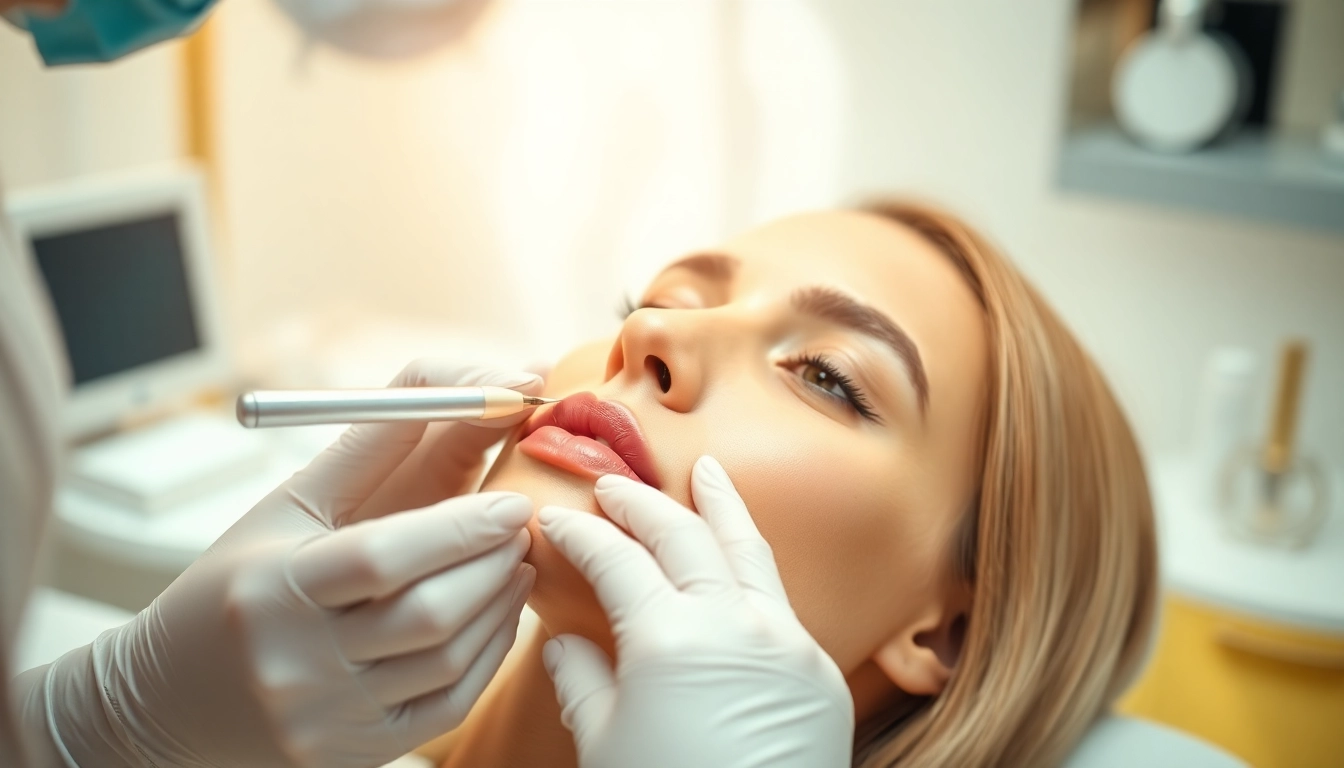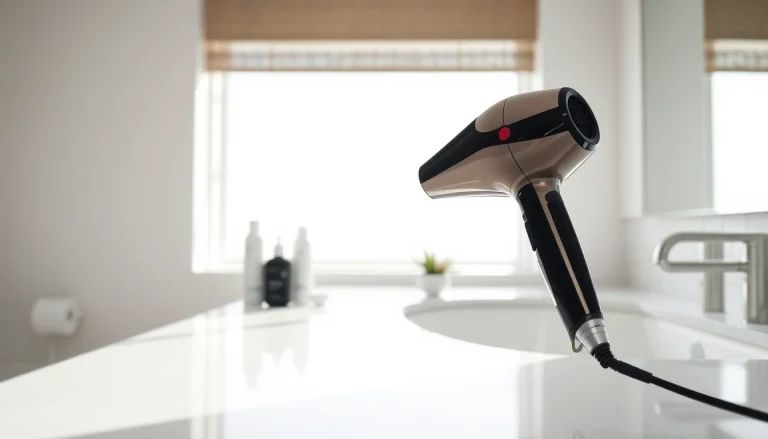Understanding Lip Augmentation
What is Lip Augmentation?
Lip augmentation is a cosmetic procedure designed to enhance the fullness and shape of the lips, providing a more youthful and defined appearance. There are various methods to achieve this look, including dermal fillers, implants, and surgical procedures. Typically, non-surgical options, particularly those involving hyaluronic acid fillers, are the most common choices due to their immediate results and minimal recovery time. For those considering this treatment, understanding the intricacies and options available is crucial.
Benefits of Lip Augmentation
The decision to pursue lip augmentation can be motivated by various reasons, which can include enhancing facial harmony, boosting self-esteem, or simply achieving a desired aesthetic look. Some key benefits of lip augmentation include:
- Improved Symmetry: Enhancing the shape and fullness of the lips can result in a more symmetrical appearance, which is often desirable.
- A Youthful Appearance: Full, well-defined lips are often associated with youthfulness, and augmentation can restore a youthful contour that diminishes with age.
- Customization: Procedures can be tailored to suit individual preferences, allowing patients to choose the level of fullness and shape.
- Non-Invasive Options: Many lip augmentation procedures are non-invasive, allowing for quick results with minimal downtime.
Common Procedures and Techniques
Several techniques are employed in lip augmentation, ranging from temporary filler injections to more permanent surgical implants. Here’s a closer look at some common methods:
- Dermal Fillers: The most popular technique, hyaluronic acid dermal fillers, such as Juvederm and Restylane, are injected into the lips to add volume and definition. Results typically last six months to a year.
- Fat Transfer: This method involves taking fat from another area of the body and injecting it into the lips. This option can offer more permanent results, although it requires a more extensive procedure.
- Lip Implants: For those seeking a longer-lasting solution, lip implants can be surgically placed to achieve fullness. This method requires more downtime and a longer recovery period.
Candidacy for Lip Augmentation
Who is an Ideal Candidate?
An ideal candidate for lip augmentation is someone who is in good physical health, has realistic expectations about the procedure, and possesses a desire for fuller lips. Typically, candidates should meet the following criteria:
- Age: Candidates should be at least 18 years old.
- Health Status: Those with allergies, certain medical conditions, or on specific medications may not be eligible.
- Expectations: Candidates need to have a clear understanding of the procedure and its results.
Consultation Process
The consultation process is an essential step before undergoing any cosmetic procedure. During this phase, potential candidates will meet with a qualified practitioner to discuss:
- Their desired outcomes for the treatment.
- Possible techniques and the practitioner’s recommendations.
- Risks and benefits of the procedure.
- Health history and any medications being taken.
This dialogue helps align expectations and ensures a tailored approach to each individual’s needs.
Factors to Consider Before Treatment
Before proceeding with lip augmentation, it’s critical to consider several factors:
- Long-term Goals: Consider how you want your lips to look both now and in the future.
- Budget: Understand the costs involved, including maintenance and additional treatments.
- Time for Recovery: Some procedures may require downtime, so plan your schedule accordingly.
- Possible Reactions: Be aware of your sensitivity levels and potential reactions to fillers or anesthesia used during the procedure.
The Lip Augmentation Procedure
Step-by-Step Process of Lip Augmentation
Regardless of the chosen method, lip augmentation generally follows these steps:
- Consultation: Initial discussions and assessments.
- Preparation: The treatment area is cleaned, and a topical anesthetic may be applied to minimize discomfort.
- Injection: In the case of dermal fillers, injections are made at specific points to achieve the desired results. If using fat transfer or implants, additional steps to harvest fat or place implants are involved.
- Finishing Touches: After the procedure, your practitioner will assess the results and provide aftercare instructions.
What to Expect During Your Appointment?
During the appointment, patients can expect a relaxed environment focused on their comfort. The procedure itself often takes about 30 minutes to an hour, depending on the method chosen. Here’s a breakdown of what to anticipate:
- The area will be numbed, leading to minimal discomfort during the procedure.
- Patients may feel pressure but rarely pain as the injections are performed.
- After the procedure, there may be some swelling and tenderness, which is normal.
Aftercare for Optimal Results
Proper aftercare is essential to ensure optimal results. Patients are generally advised to:
- Avoid strenuous activities and excessive heat for at least 24 hours.
- Refrain from touching or massaging the lips immediately after the treatment.
- Follow any specific aftercare instructions provided by their practitioner, which may include applying ice to reduce swelling.
Potential Risks and Considerations
Common Side Effects
While lip augmentation is generally safe, like any medical procedure, there can be side effects. Common side effects may include:
- Swelling and tenderness at the injection site.
- Bruising, which typically resolves within a week.
- Asymmetry, where the lips may not appear evenly filled.
In rare cases, complications such as infection or an allergic reaction may occur.
Long-Term Maintenance Advice
For optimal results, patients should consider the following maintenance tips:
- Regular follow-ups with their practitioner to assess lip volume and discuss top-up treatments.
- Hydrating the lips and using sun protection can help maintain results longer.
- Being aware of any changes in lips over time and discussing any concerns with a qualified professional.
Deciding Between Temporary and Permanent Solutions
Deciding between temporary fillers and permanent solutions is a significant consideration. Temporary fillers allow patients to experiment with different looks and adjust based on their preferences, while permanent solutions offer a more long-lasting result. Factors to weigh include:
- Desired permanence of results.
- Willingness to commit to additional costs for temporary solutions.
- Understanding the implications and potential complications of a surgical option.
Real-Life Transformations and Testimonials
Client Success Stories
Many clients have experienced positive transformations through lip augmentation. Testimonials frequently highlight increased confidence, improved self-image, and satisfaction with results. A common theme among feedback encompasses the surprise at how subtle changes can create significant impacts.
Before and After Examples
Visual evidence of success serves as powerful motivation for many considering augmentation. Before and after images can showcase not just the physical change but also highlight patient satisfaction and their overall happiness with the process. Many clinics provide this imagery on their websites or during consultations to demonstrate potential outcomes.
Expert Opinions and Insights
Industry experts today emphasize the importance of education and informed choice when it comes to lip augmentation. They highlight that a thorough understanding of one’s anatomy, desired aesthetics, and realistic expectations can lead to fulfilling experiences. Experts recommend choosing qualified practitioners who approach treatments holistically, considering the entire facial structure rather than just the lips.








